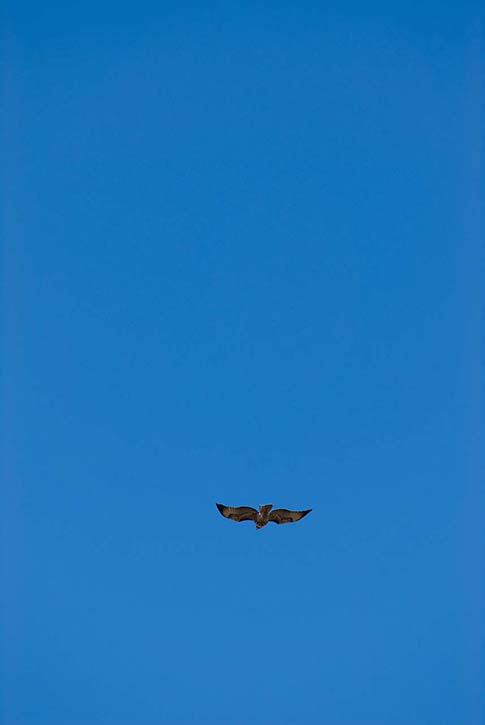Today's field trip: 'Exploring Owls'
Today's field trip: 'Exploring Owls'
Today D. and I (and 3 very young but very smart little girls and their accompanying adult) attended an "Exploring Owls" workshop at the Don Edwards San Francisco Bay National Wildlife Refuge. We learned how owls hunt, see and hear, and what they eat. And we listened to a recording of owl calls. They do more than just hoot: they also hiss, trill, click, scream and bark. Some of the sounds they make don't sound like anything a living creature would make. Hearing them while alone in the woods at night would give me some serious heebie-jeebies.
Anyway, we took a break to go outside the refuge's visitor center to see a great horned owl sitting in a tree about 15 feet off the path near some refuge staff buildings. The owl just sat there on the branch looking at us, turning its head and squinting its eyes.
When we returned inside we got a chance to dissect barn owl pellets. Pellets are not poop, they are regurgitated masses of indigestible material (bones, feathers, fur, etc.) from the small prey swallowed whole by owls. We had a chart showing the commonest prey animals and drawings of their various body parts, so we could tell by the shape of a pelvic bone, for example, if the prey was a mole, a shrew, a bird or a rat.
Here's some pics D. took while we were there.
The Dumbarton Bridge crosses San Francisco Bay between East Palo Alto (in the distance) and Newark (to our right).

Owl feet. Owls have a rotatable third toe, to make it easy for them to both perch comfortably on a branch (three toes in front and one behind) and grab prey securely (two toes on either side).

On our way out to see the great horned owl in a nearby tree, we saw a juvenile red-tailed hawk soaring overhead.

The great horned owl sitting in a tree.

Dissecting an owl pellet. Mine has about 2 mice in it. We can see tiny little ribs, mandibles with teensy-weensy little teeth, leg bones, pelvic bones and skulls. D. even finds a couple of miniscule vertebrae. Beneath the dish is a laminated bone chart of the commonest prey animals.

On the wall in the visitor center hangs an autographed photo of Don Edwards, the Congress dude who was instrumental in creating the wildlife refuge and for whom it is named. Well done, Don!
Thanks!

.
Today D. and I (and 3 very young but very smart little girls and their accompanying adult) attended an "Exploring Owls" workshop at the Don Edwards San Francisco Bay National Wildlife Refuge. We learned how owls hunt, see and hear, and what they eat. And we listened to a recording of owl calls. They do more than just hoot: they also hiss, trill, click, scream and bark. Some of the sounds they make don't sound like anything a living creature would make. Hearing them while alone in the woods at night would give me some serious heebie-jeebies.

Anyway, we took a break to go outside the refuge's visitor center to see a great horned owl sitting in a tree about 15 feet off the path near some refuge staff buildings. The owl just sat there on the branch looking at us, turning its head and squinting its eyes.
When we returned inside we got a chance to dissect barn owl pellets. Pellets are not poop, they are regurgitated masses of indigestible material (bones, feathers, fur, etc.) from the small prey swallowed whole by owls. We had a chart showing the commonest prey animals and drawings of their various body parts, so we could tell by the shape of a pelvic bone, for example, if the prey was a mole, a shrew, a bird or a rat.
Here's some pics D. took while we were there.
The Dumbarton Bridge crosses San Francisco Bay between East Palo Alto (in the distance) and Newark (to our right).

Owl feet. Owls have a rotatable third toe, to make it easy for them to both perch comfortably on a branch (three toes in front and one behind) and grab prey securely (two toes on either side).

On our way out to see the great horned owl in a nearby tree, we saw a juvenile red-tailed hawk soaring overhead.

The great horned owl sitting in a tree.

Dissecting an owl pellet. Mine has about 2 mice in it. We can see tiny little ribs, mandibles with teensy-weensy little teeth, leg bones, pelvic bones and skulls. D. even finds a couple of miniscule vertebrae. Beneath the dish is a laminated bone chart of the commonest prey animals.

On the wall in the visitor center hangs an autographed photo of Don Edwards, the Congress dude who was instrumental in creating the wildlife refuge and for whom it is named. Well done, Don!

Thanks!


.